Faithful readers will recall my admiration for the TIME Stories series. With a market now flooded with narrative puzzle games, it can be hard to remember just how revolutionary this one was when it first came onto the scene, but at the time it really blew me away. Since the original Asylum scenario, there have been a bunch of different entries released. Some have been excellent, while others fell a bit short in my opinion. However, I never tired of the novelty of being able to go back in time to the start of an adventure and retrace my steps with more knowledge the second (or often third or fourth) time around.
Inevitably, following the success of TIME Stories, new designs came out. Most of these are much more nimble in their approach, not requiring a base game, keeping the adventures self-contained, and playing in closer to an hour, rather than the several a TIME Stories scenario might take.
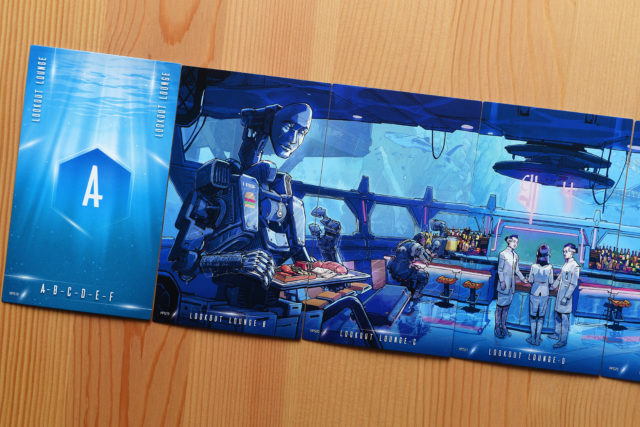
Last year, Space Cowboys released Madame, which was to be the grand finale of the ‘white’ cycle of the series. The time for revolution is now! The next iteration of TIME Stories addresses many of the challenges it faced getting new people to try out the game for the first time. The goal for the TIME Stories Revolution cycle is to provide an easily accessible series of games that retain the same feeling of a white cycle scenario. If you’re one of those people who want to have an over-arching story to accompany your adventures, Space Cowboys has you covered there too.
The Hadal Project is the first scenario in the Revolution cycle. It’s designed by TIME Stories creator, Manuel Rozoy and the wonderful Melissa and Kevin Delp, our friends from Tantrum House in their first design credit.

The goal was to create an entry point for players that were excited about the concept of the game, but not ready to invest in a base game and then a number of scenarios. With The Hadal Project, players can get the TIME Stories experience without having to make such a big commitment. Instead of using the base board and player pawns, the card panoramas familiar to the series are just laid out on the table. Players can take and read the location cards they want to explore, rather than having to move their pawns there.
The Hadal Project starts with the TIME agency in disarray. They are forced to rely on a strange new substance, Azrak, which has been supplied to them from an alien race known as the Syaans. Azrak is in limited supply, but can be very helpful in allowing agents to remain in their receptacles longer.
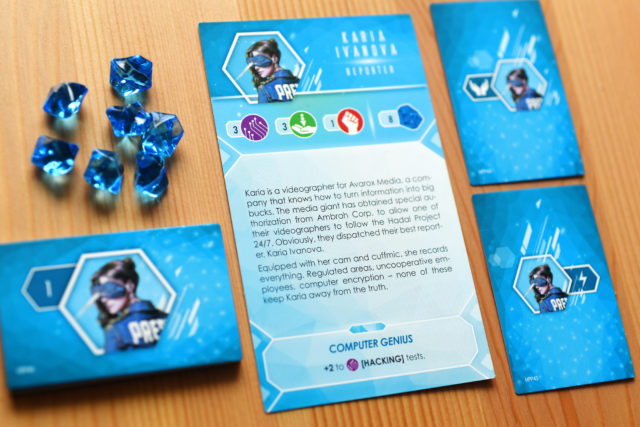
Speaking of receptacles, just like in earlier scenarios, you will inhabit the body of a person who lived during the time period you’re visiting. They have a set of skills and a backstory, and a starting pool of Azrak. They also have some starting gear that will come in handy in the mission, and a secret goal to accomplish during the game.
One of the more interesting additions is the Interaction deck that each player has. You may visit a location and talk to someone, which results in you being instructed to take one of your receptacle’s interaction cards and reading it. Perhaps this will lead to a dead end for your receptacle, but if another player talks to that same person, it can lead to unlocking some more items or information. This makes exploring locations thoroughly much more important.
Game rounds will be familiar to returning players. The Time Captain chooses a location and lays out the card panorama, then players visit the locations that interest them taking the card and reading it silently and then ‘telepathically’ discuss what they found. During the discovery phase, you can spend Azrak to explore any unclaimed cards or to initiate a test.
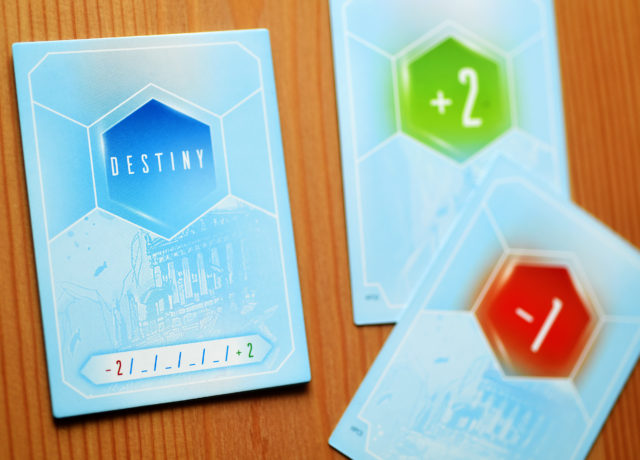
Tests display a skill which is being challenged and a number of different results depending on your success or failure. Facing a test, you must spend one Azrak to access your receptacle’s skill level in that category (for example Strength or Tech). You can spend additional Azrak to boost your skill and other agents can also support you by spending Azrak. Finally, you flip a Destiny card and add its boost to your skill level. That gives you a total to apply to the test. Destiny cards range from a low of -2 to a high of +2.
Based on the outcome of a test you may be instructed to take an item card. Green items are usually physical objects that you acquire. Yellow items refer to a personal event which can be shared with the other agents, but doesn’t affect them. Red items are usually group events. White items have an impact on the game itself. They may change the map or be placed to cover other cards. Interestingly, you actually want to aim to meet the test requirements exactly. Going too low or too high often still results in a reward of some sort, but the best reward usually comes from being right on target.
As you can probably tell, Azrak is the currency in the Revolution cycle, rather than time itself. When an agent spends the strange crystals they go into a pool known as the vortex. Each player must have at least one Azrak crystal to maintain their link with their receptacle. You can reclaim the Azrak tokens in the vortex by performing a Standard Update when you travel between locations. Move one Azrak crystal to the Mission Return card and redistribute all of the Azrak in the vortex to the agents however you choose. Each Azarak you place on the Mission Return card changes the ranking for how well you did on the mission. Spend 0 Azrak in this manner and get a Legendary ranking, but 5 or more and you’ll be considered Pathetic. Harsh.
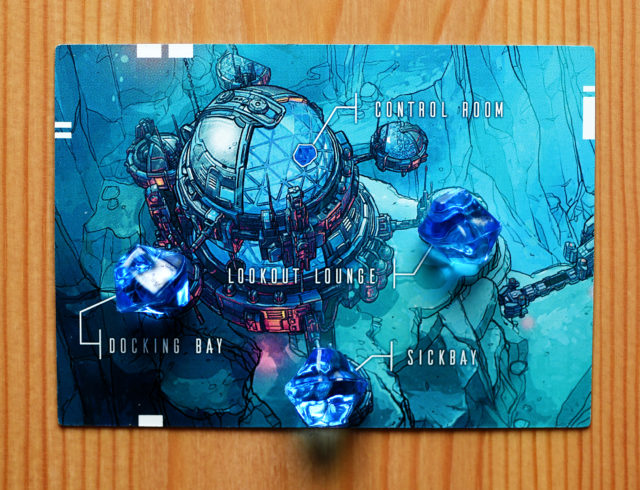
If you’re forced to discard your last Azrak token, you’re ejected from the body of your receptacle and left to float in limbo. You are able to communicate with the other agents, but won’t be able to explore or take part in tests until the team changes locations and performs a Standard Update. If all agents are ejected at the same time, you’ve failed the run and must start from the beginning.
The Hadal Project comes with a punchboard of tokens, but they are meant to be stored facedown and unpunched. You don’t get to see what’s on the other side until you’re instructed to punch them. This adds an interested air of mystery to the game.
Like most TIME Stories adventures, I don’t want to go into the details too deeply. These scenarios are best experienced when you don’t have preconceived ideas about how everything is going to play out. I can say in The Hadal Project, you travel to the year 2099. A terrifying plague is sweeping across the world (where have I heard of this before?). On the ocean floor, a secret science lab may have just made a discovery that could change the fate of the world. That’s where the story begins.
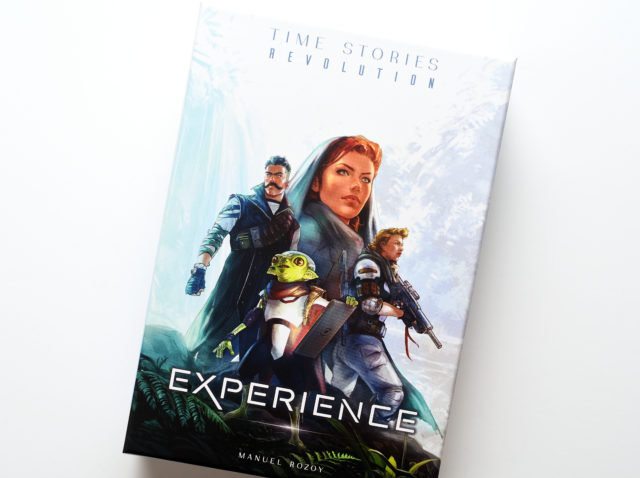
Some players are less keen on having one-off adventures. They want to take part in a larger story and be able to track their progression over time. For them, Space Cowboys created TIME Stories Experience. It works as a sort of companion piece to the adventures, allowing you to fill in the gaps between each mission you go on.
In Experience, you play a permanent character. This is your agent who is travelling through time into the bodies of various receptacles. The agent you pick will be yours for as long as you play Revolution and they will grow and develop over time. Each of them has different proficiencies that can be advanced by spending Azrak.
After you complete a mission, like The Hadal Project, you perform a Mission Return, using Experience. This takes place over four steps. During the recruitment phase, you get to gain proficiencies from people you might have encountered during your mission. You might have come across cards with the XP symbol on it. This allows you to keep the card and transfer them to the agency gaining their proficiencies. During the threat phase, threat cards are drawn and resolved depending on the level of the threat wheel, which indicates the danger level of the time continuum. During the Personal Management phase, players can spend Azrak to acquire new skills and treat weaknesses they may have gained. Finally the Chronology phase allows you to scan a QR code and get more information on the broader story taking place in the TIME Stories universe.

You can definitely play the scenarios without Experience, but if you want some added theme, continuity, and context to the game, it’s a welcome addition.
I’m glad to see the TIME Stories series continuing. It’s had an important impact on the gaming landscape and this evolution keeps it fresh and interesting for a whole new set of agents. I’ll be excited to see when it takes us next.
A copy of TIME Stories Experience and The Hadal Project were provided for this article.
Comments
No comments yet! Be the first!